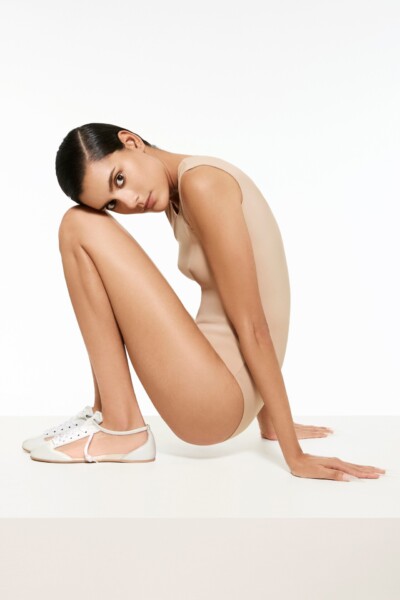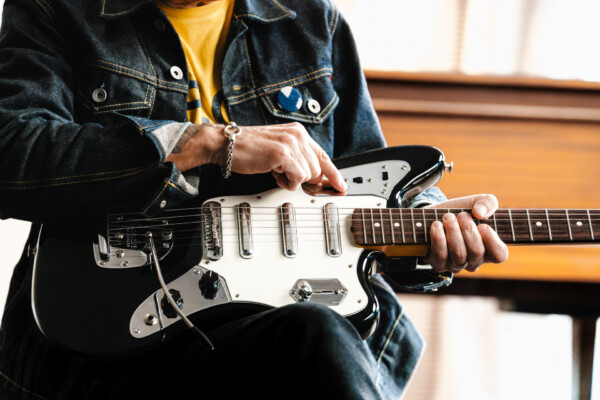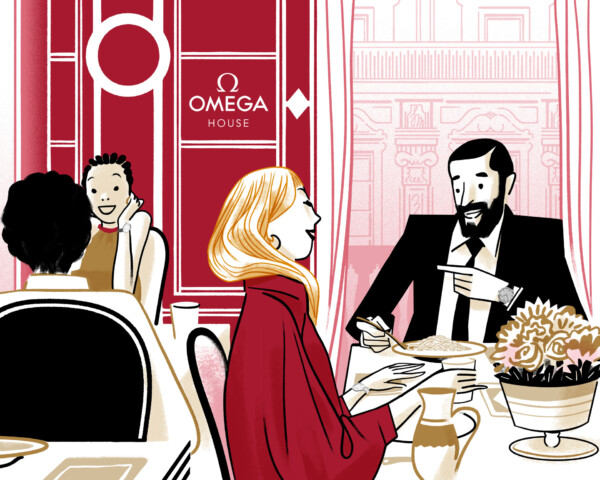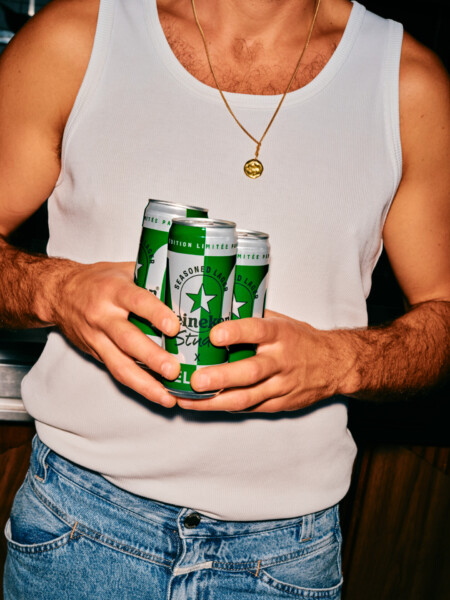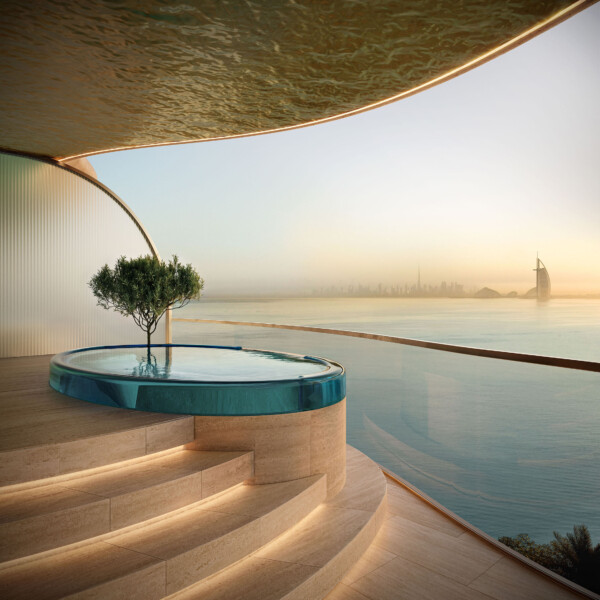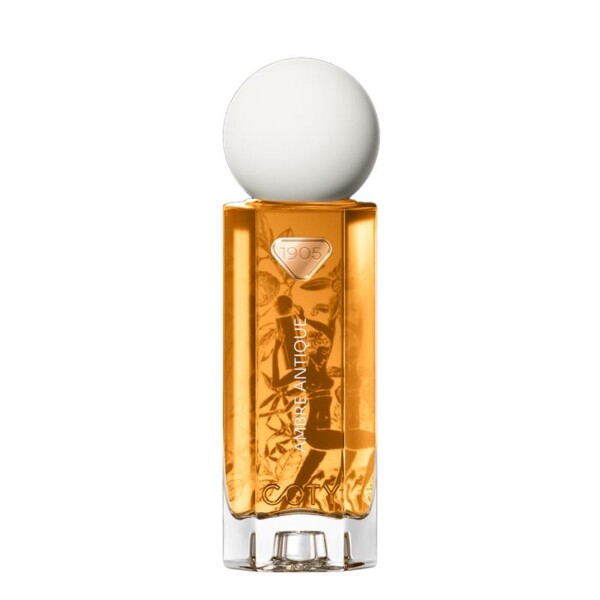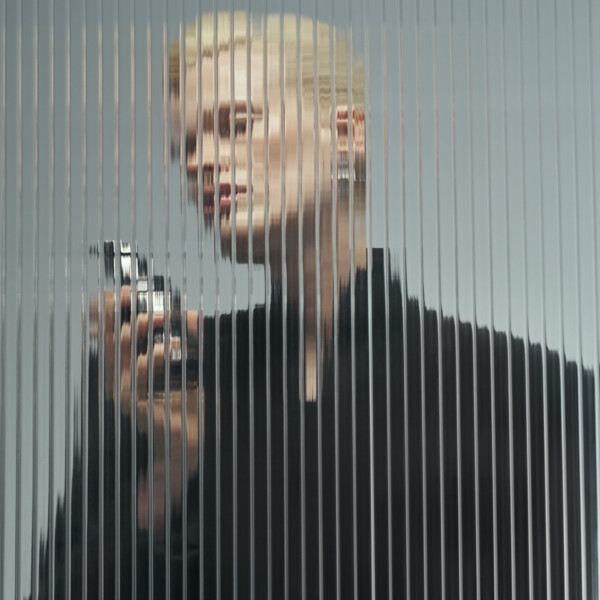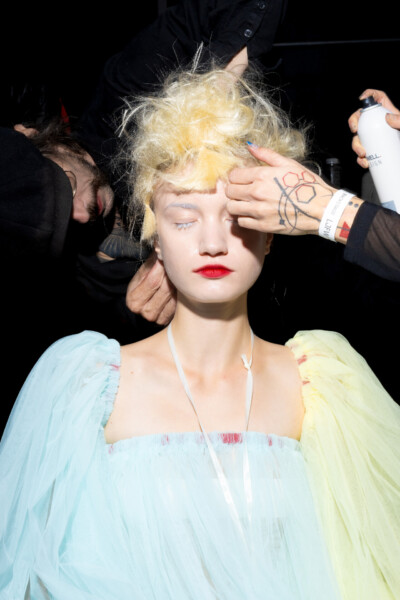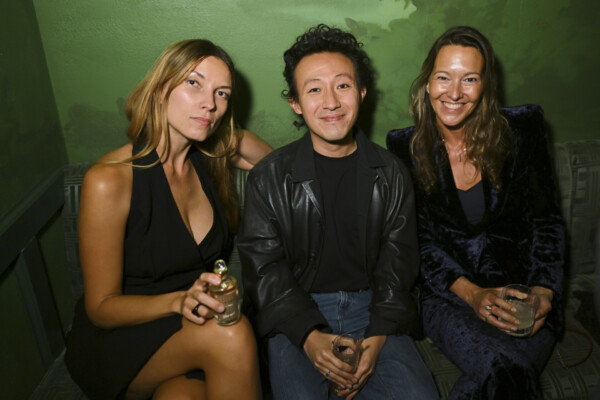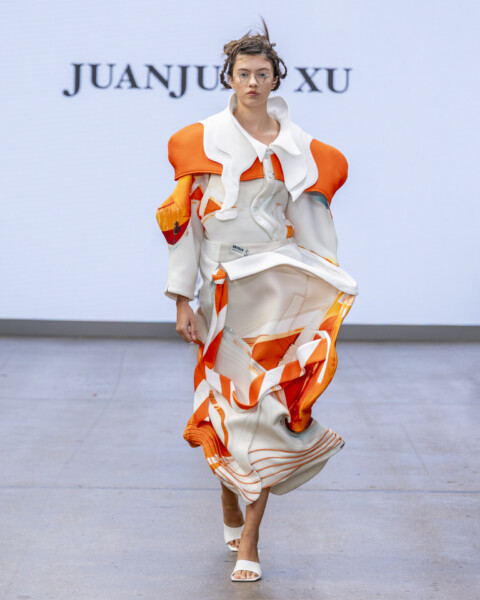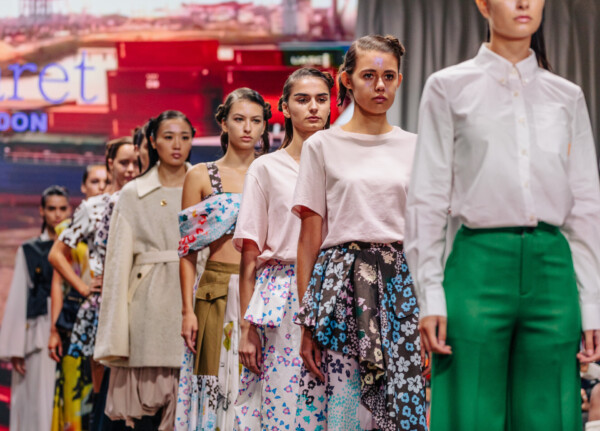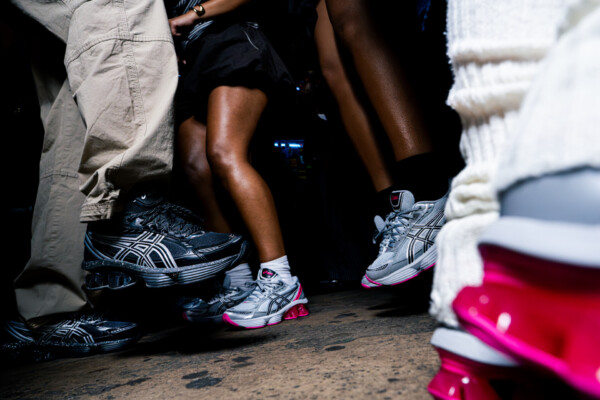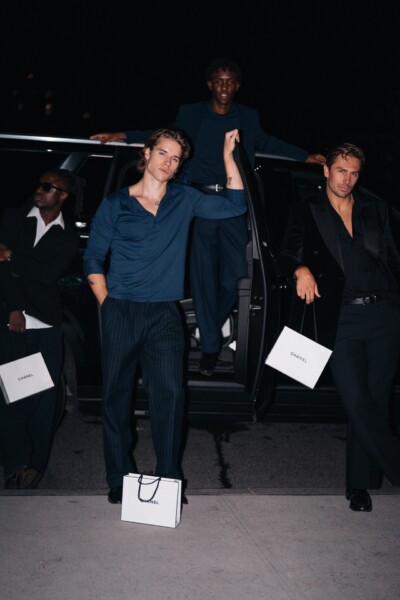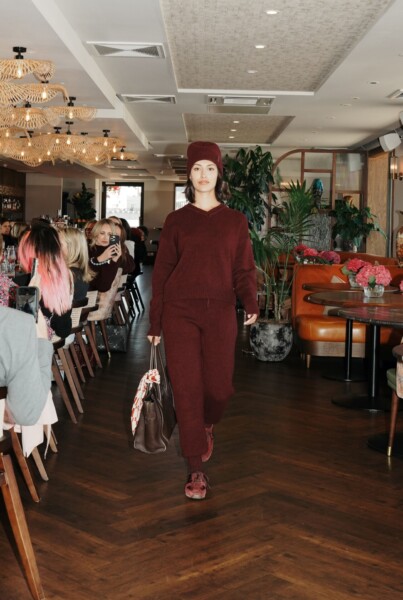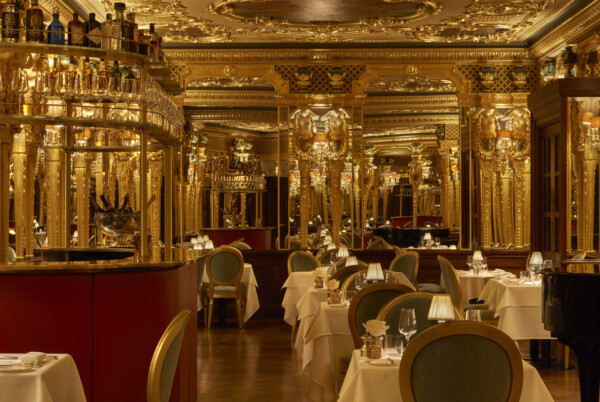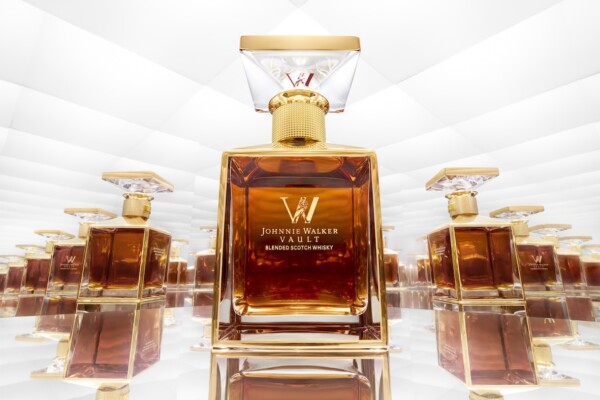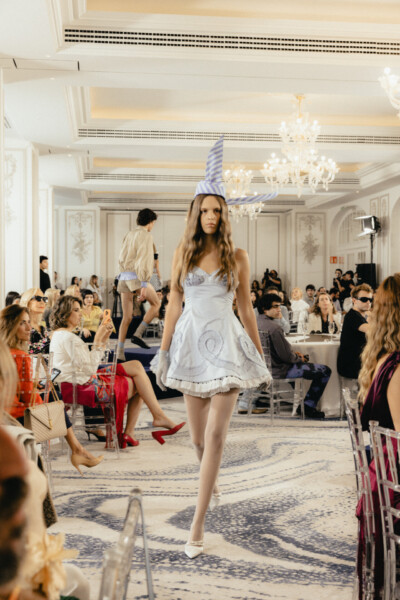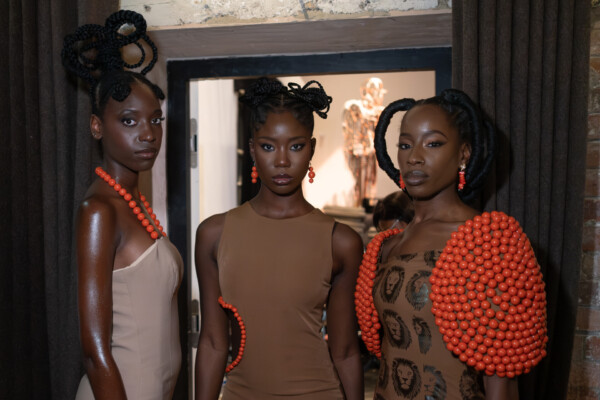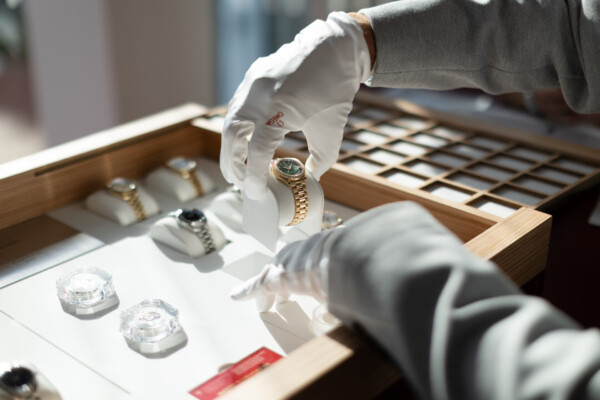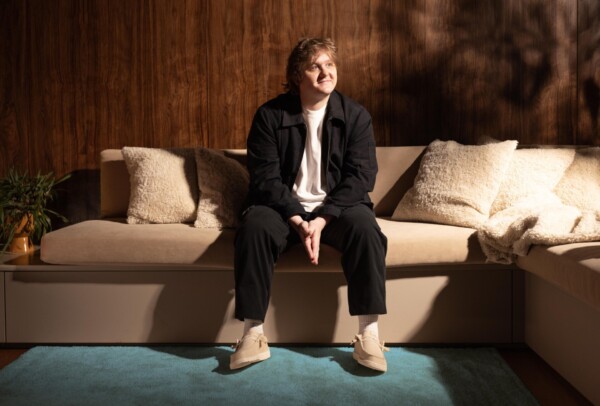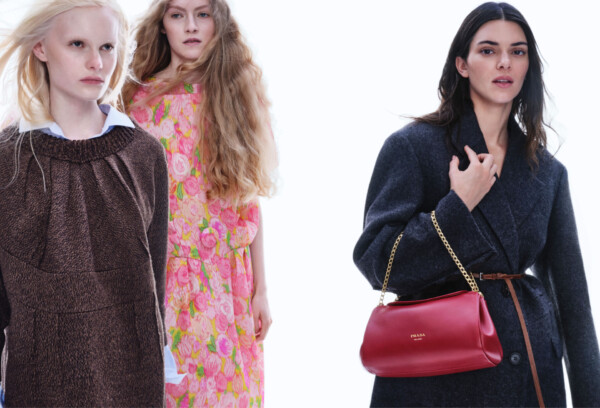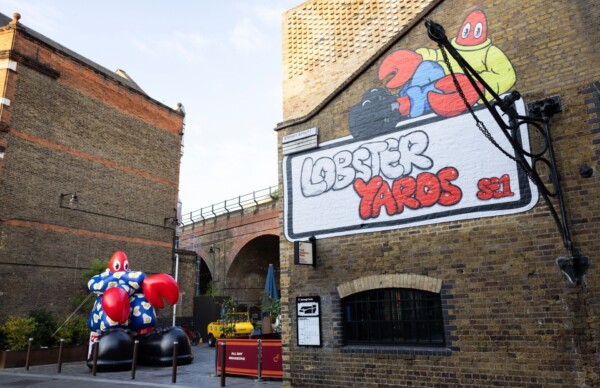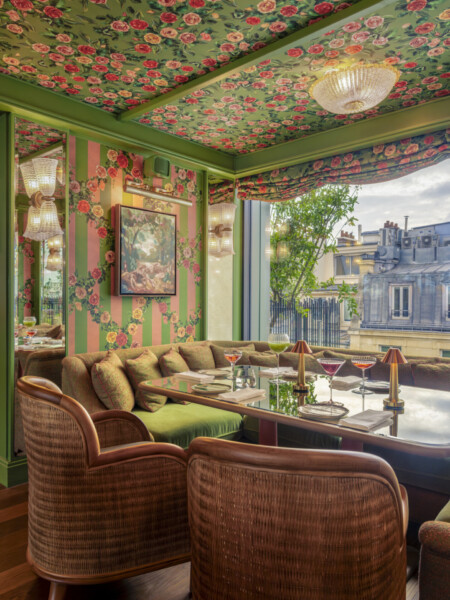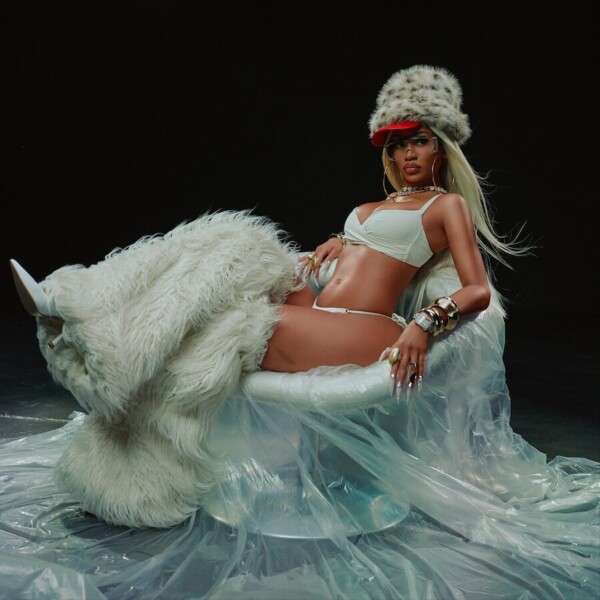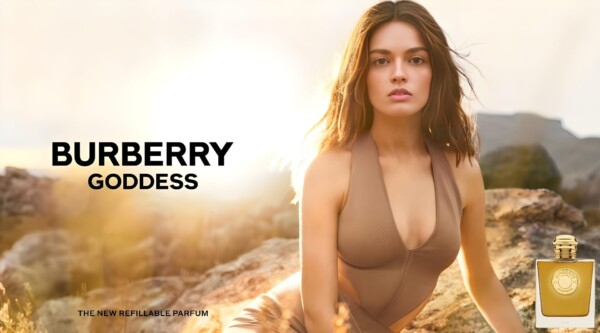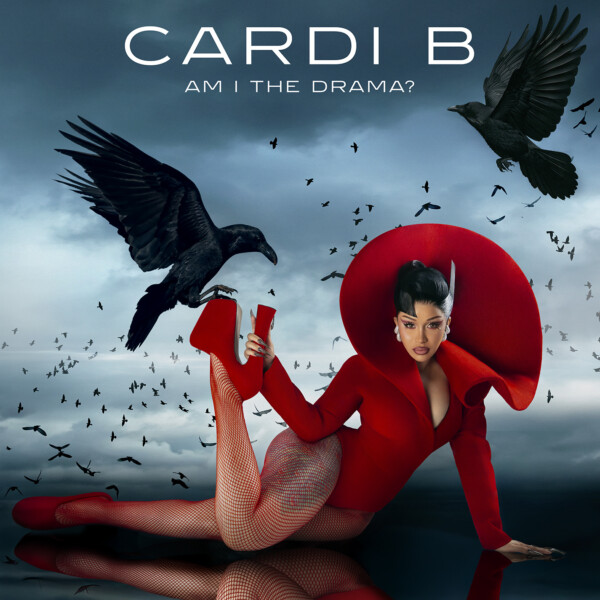By Olive Walton, October 2025
Bringing Ballet To A New Audience: Laufey Collaborates On Music Films With NYC Ballet Dancers And Polo Ralph Lauren on Music Film Series
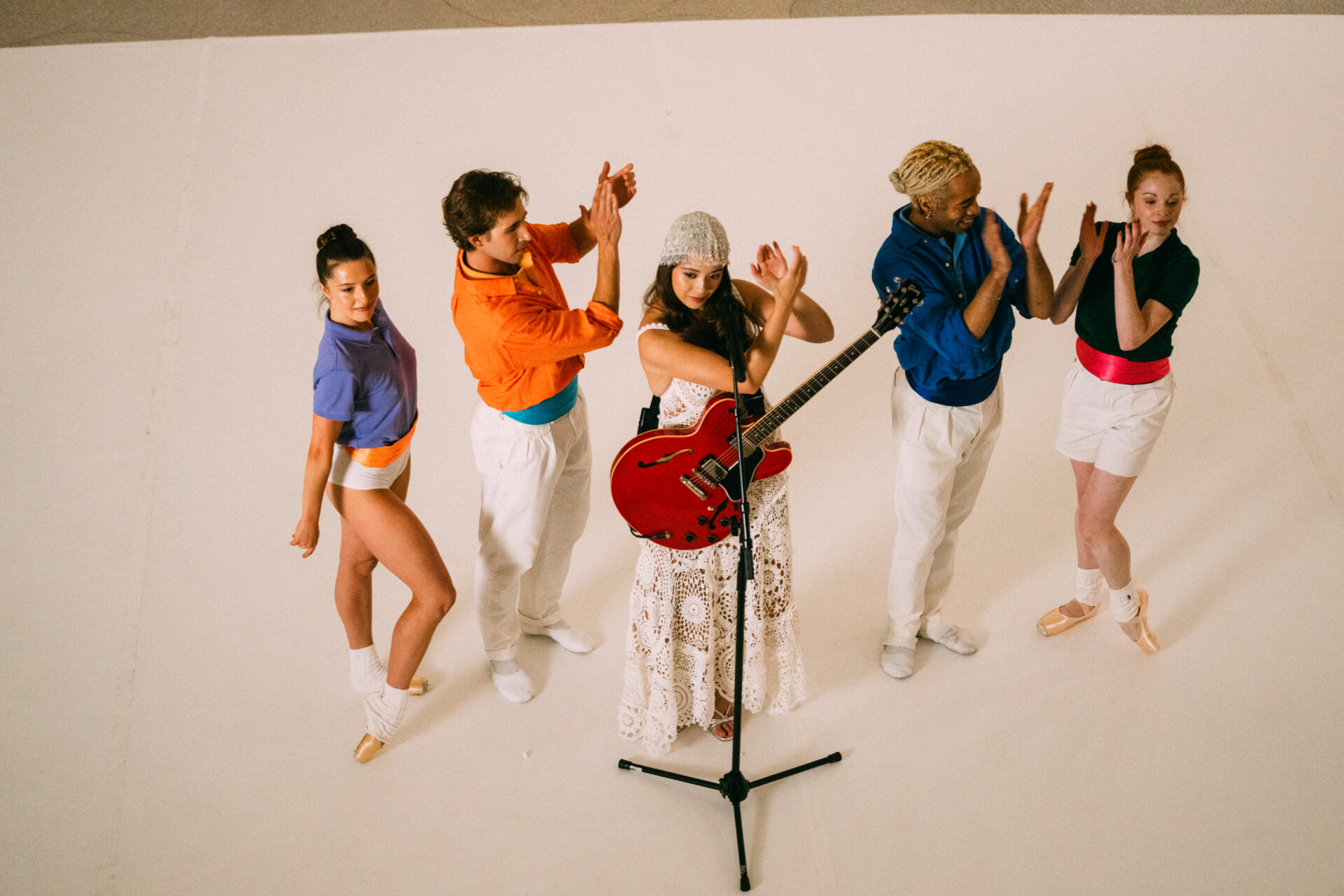
In celebration of her third studio album, released in August this year, singer-songwriter Laufey partnered with principal ballet dancers to create four exclusive ballet films featuring tracks from the record. Known for her unique blend of jazz, classical and pop, Laufey brings a cinematic quality to her music that naturally lends itself to visual storytelling.
The films include live performances of four songs from A Matter of Time. Laufey performs live, accompanied by her band on Silver Lining, Lover Girl and Clockwork and delivers a solo piano performance of Snow White. Throughout, some of the world’s top ballet dancers from New York City Ballet and American Ballet Theatre move around her in vibrant, custom Polo Ralph Lauren costumes while Laufey wears a custom design by the brand.
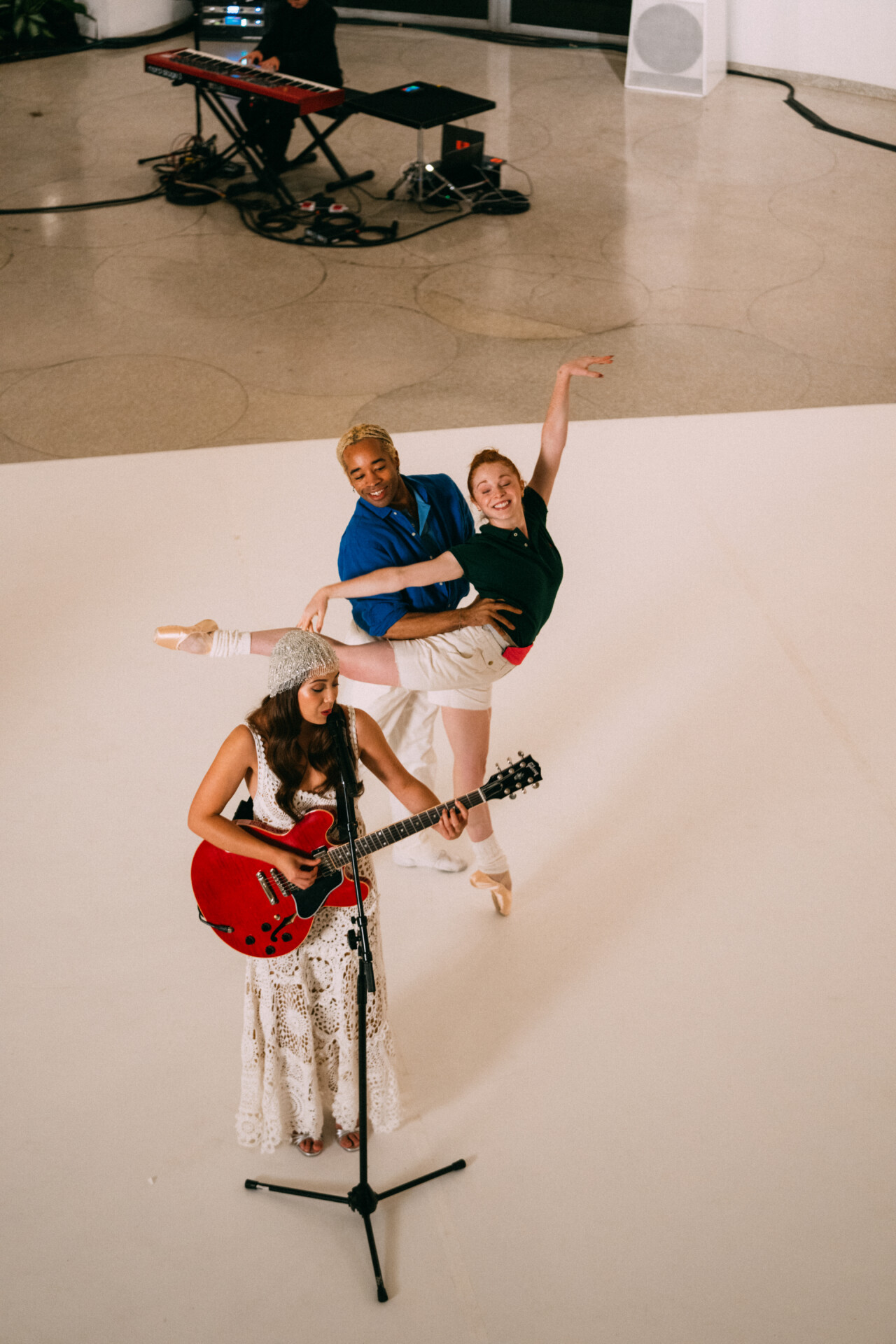
I spoke with Creative Director and choreographer Stephanie Gotch, and co-choreographer Gabe Stone Shayer, a former soloist with American Ballet Theatre, about their objective of bringing dance to a new stage. Their main focus for the film series was to explore how ballet can exist beyond the theatre and, in doing so, reach new audiences.
Gabe, inspired by his choreographic residencies and experiments with blending artistic mediums, sought to challenge what “classical” choreography can mean. By pulling from fashion and pop culture and merging those elements with classical technique, he hoped to use film as a medium to spark curiosity and inspire audiences to seek out live performance.
As a former dancer who trained at New York City Ballet’s school, School of America Ballet, Stephanie’s love for ballet has stayed with her throughout a career that spans fashion and PR. She noticed how ballet often appears in pop-culture as a visual motif, but rarely with a focus on the artistry and discipline of the dancers themselves. With this project, she set out to shift that narrative and bring the craft to a wider audience.
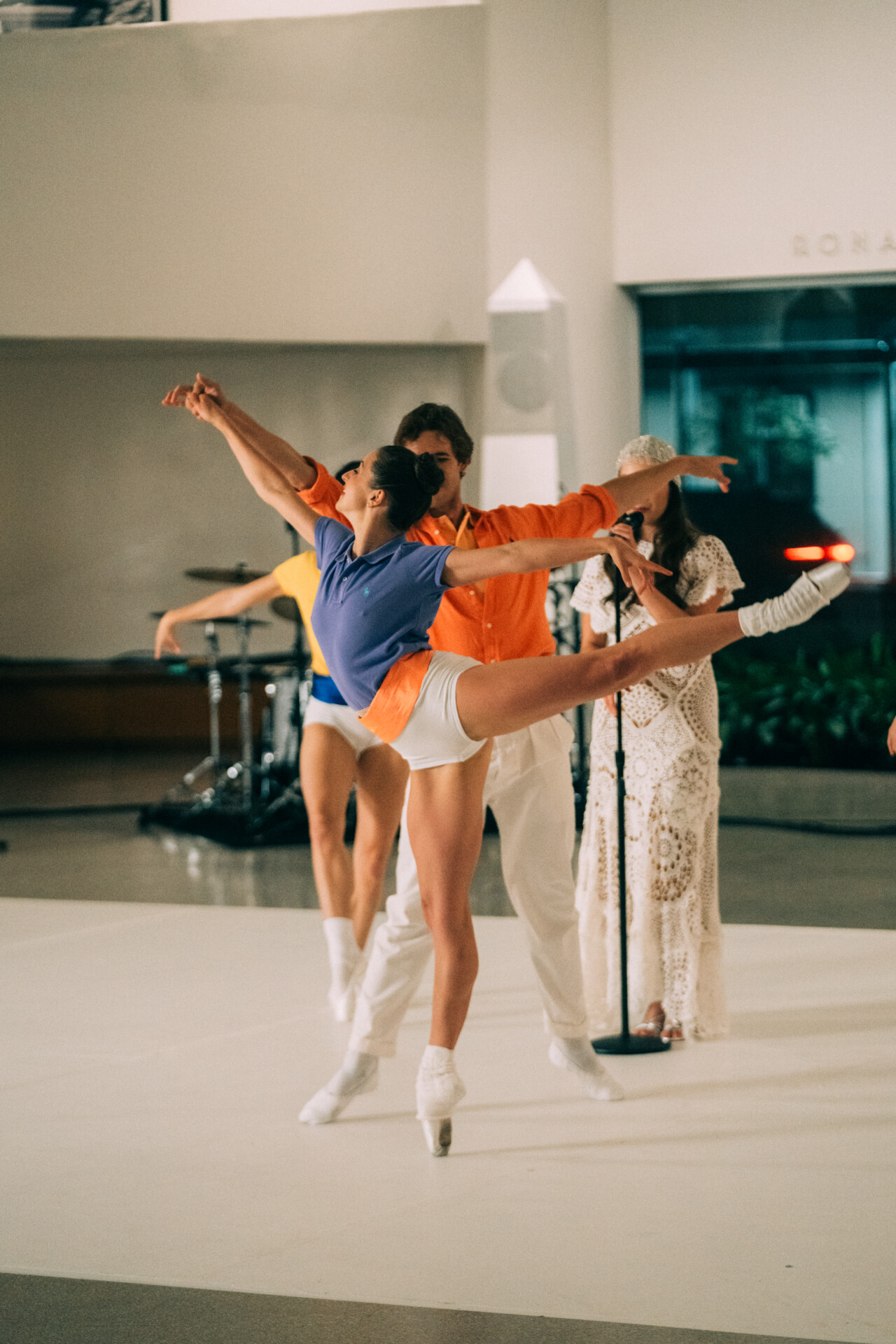
Together, Stephanie and Gabe are working to bring ballet into new spaces, creating opportunities beyond traditional companies and stages. While ballet dancers train rigorously, they often lack access to broader artistic and commercial platforms. The pair hopes to help bridge that gap and support dancers in building their own brands and artistic autonomy.
“It’s about expanding the scope of both the content and the art form,” Stephanie explains.
“Creating new pathways for people to access ballet is a big vision. It’s ambitious, and it won’t happen overnight, but ballet and neoclassical dance are beautiful, meaningful art forms. They deserve moments in unexpected places.”
Although ballet continues to influence pop culture and film, seen in projects like the Ballerina movie, the balletcore aesthetic, and more, dancers still face barriers to the right kinds of opportunities. Stephanie and Gabe hope to help dismantle those barriers, using their own experiences to break boundaries beyond traditional theaters.
With original choreography that draws on both contemporary and classical ballet vocabulary, the films place dance in dialogue with architecture and sound, expanding ballet’s visual and narrative possibilities far beyond the stage.
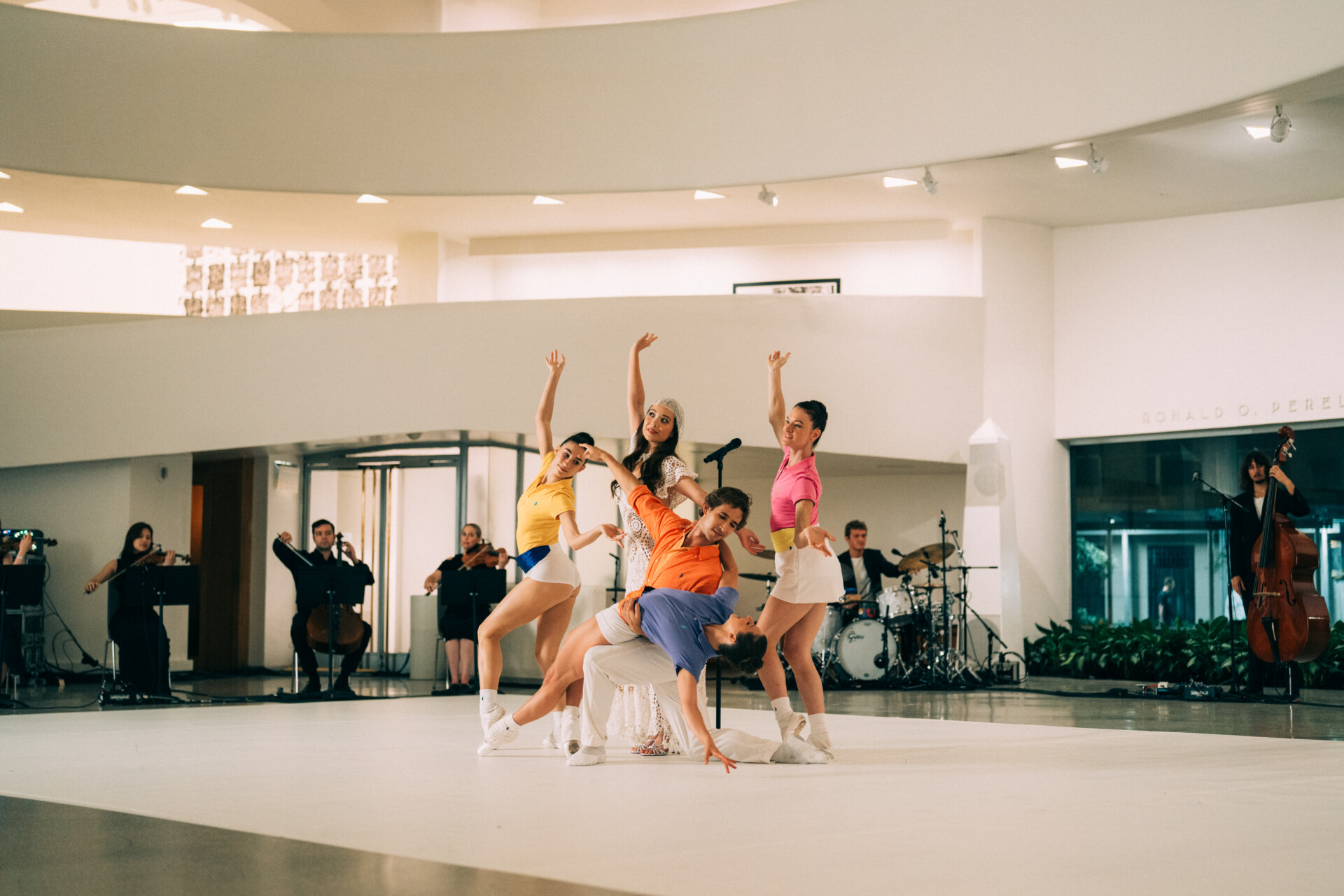
Olive Walton: Stephanie why did you want to work with Gabe specifically for this project?
Stephanie Gotch: The first time I saw Gabe dance, he was mesmerizing—technically brilliant and captivating to watch. He trained at the Bolshoi Ballet Academy, one of the most demanding and most prestigious ballet schools in the world, then joined American Ballet Theatre at just 17, where he danced for 12 years. That alone is remarkable. But what truly sets him apart is how he pushes beyond the traditional path—his work in Ghana, collaborating with Alicia Keys and Chanel, and bringing ballet into unexpected spaces. Now, outside the company, this feels like a powerful second act for him. He has the freedom to choose his projects and shape them exactly how he wants—a level of autonomy you usually don’t get within a company.
OW: I wanted to ask about the concept for this project. Stephanie said it started with you two. What was the seed of the idea?
SG: Gabe had previously done a residency at the Guggenheim with Works & Process, and we were talking about him dancing there again. Laufey immediately felt like the right collaborator—classically trained, a Berklee graduate, a cellist, and the daughter of a violinist, she has been blending jazz and pop in her own way. We knew she understood ballet, and her music suited the project perfectly. I mentioned the idea to my friend Stephanie Gaber at her label, and it quickly took off.
Gabe Stone Shayer: As far as I know, this Laufey project is only the third time they’ve done something like this. The last was Solange in 2013. We kept pinching ourselves, saying, “Did we really do this?”
SG: It was a dream of ours to work with the Guggenheim and create pieces that could live inside Frank Lloyd Wright’s iconic architecture. Since we both come from fashion backgrounds, we wanted to try something a little different from the usual ballet costumes. Polo Ralph Lauren was the perfect partner—they loved working with Laufey and the idea of collaborating with professional ballet dancers. They put together three looks for the dancers and even made a handmade crochet dress just for Laufey.
OW: I want to break down the four pieces, starting with Snow White. It’s a heartbreaking ballad. Gabe, you’re actually in this one with just one other dancer. What was the casting process like, and how did you decide to feature yourself?
GSS: Since it’s a slow, emotional ballad, I immediately told Steph I needed this one. My whole career at American Ballet Theater, I hadn’t really been seen or taken seriously in the classical space as I wanted to be. So this felt like my moment. I danced with Zimmi, who I love and respect deeply. We both felt this emotional narrative: a kind of mature, bittersweet letting go of a relationship, the long goodbye. It’s not dramatic or angry, just two people recognizing it’s over, holding on to the last moment, then letting go.
OW: That’s beautiful. The lyrics explore themes of comparison and self-criticism, especially around feeling not good enough, which feels very relevant in ballet. Was that part of what you wanted to express in the choreography?
GSS: Yes, exactly. It’s abstract in the sense that these feelings, self-doubt, pressure to be perfect, are universal, especially in ballet. You have to be thin, have the best technique. It’s like being an Olympic athlete under constant pressure from yourself and others.
SG: The piece is really about that emotional letting go of self-doubt. It’s Gabe as Gabe and Zimmi as Zimmi, showing those feelings of not feeling good enough but also the need to accept yourself. We picked Zimmi because Gabe had a connection with her, she dances at American Ballet Theater, and I’ve worked with her too. Her artistry and emotional expression are beautiful, and their chemistry as partners is perfect for this piece. The choreography was inspired by classic ballets like Swan Lake or Romeo and Juliet, Inspired by classic ballets like Swan Lake and Romeo and Juliet, our choreography highlights partnering built on closeness and connection. The song is raw, and Laufey’s lyrics lean into these insecurities we all have. We wanted to highlight that through both the emotion and the traditional ballet vocabulary.
GSS: There are multiple layers and dialogues in this piece. There’s the literal dialogue of the lyrics, my own interpretation, my internal dialogue as Gabe: what I’m going through and what this project means to me. Then there’s Zimmi’s story, who I know well, and Stephanie’s input too. So, at least four or five voices shape the choreography and the feeling of the music together. It’s not just the lyrics alone, it’s the music and the narrative I built around it.
OW: In regard to the filming, the Snow White section was done in one continuous take, which felt very intimate compared to the others. Did you have a say in that choice?
SG: That was actually Junia, Laufey’s twin sister and creative director, who wanted to do the one-take approach with Laufey. It really fits the intimate vibe, especially with Laufey singing live. Her voice is stunning, and with just two dancers and the piano, it felt raw and personal. The direction matched that perfectly.
GSS: I remember the rehearsal before Guggenheim, our first time hearing Laufey sing live. We showed her all the pieces, saving Snow White for last. When she started singing, it was so emotional and it all just clicked. Doing it in one take helped draw the audience fully into that moment without distractions.
OW: Moving on to Silver Lining, how did you approach choreographing it?
SG: When I heard Silver Lining, I wanted a bigger cast, everyone to be involved. There was something about the song that made me focus on these four female ballet dancers moving together in the core, really synced.
GSS: We first tried to envision it as a full live ballet, a complete show. I loved playing with the tone of the song, it’s light and cute but with a heavy edge, like “When you go to hell, I’ll go there with you too” The dancers embody that attitude – kind of cheeky and skipping around while saying “fuck you.” When choreographing, we aimed to match that inner dialogue in the movement.
SG: Also, we wanted to feature Indiana, a principal at New York City Ballet and a longtime friend of Gabe’s. She’s incredibly talented, athletic, effortless, and consistent. We made choreography to highlight her strengths.
GSS: I’ve known Indiana since I was three, so it was special.
SG: We filmed after dark, so it felt exciting and exclusive to be the only ones in the museum at night.
OW: I loved how Clockwork uses the Guggenheim’s levels, starting with dancers on the balconies, then panning down to the main action.
GSS: Yeah, the rotunda’s shape and those levels made the choreography feel vertigo-inducing as we placed our bodies in the space.
OW: How did you approach spacing and choreography for this one?
SG: We wanted it cheeky and playful, reflecting the dancers’ New York City Ballet background. We aimed for a neoclassical style – think Jerome Robbins, Balanchine and classical ballet meets contemporary.
GSS: The song’s vibe felt like Ella Fitzgerald meets Gene Kelly, jazzy, vintage musical energy. We also loved how fashion was incorporated: not quite costumes, but not everyday clothes either. Like ballerinas dressing in rehearsal but elevated – pulling sleeves up, rolling trousers. Practical yet cool.
OW: Like the tutu with a polo shirt. That was such a fun contrast. So stylistically, this piece blends classical ballet with contemporary influences?
SG: Definitely neoclassical ballet with touches of old Hollywood playfulness. The song’s cheeky tone inspired a fun vibe. We got to feature Joseph Gordon and Indiana Woodward, both NYCB principals, and highlight Joe’s amazing turns and jumps, showing the bravado of a male principal dancer.
GSS: At the start, there’s a step where it looks like the dancers are putting on little hats, a subtle nod to old Hollywood. Sometimes I use classical ballet moves accidentally that end up fitting perfectly with the style, like that top hat gesture.
SG: When choreographing, we’d record everything and review to pick the best steps, building a vocabulary before finalizing. For Clockwork, the song’s about falling in love at a jazz club, so it’s playful and flirty, especially between Joe and Indiana. The other dancers brought a jazzy vibe, making it lighthearted, a nice contrast to the emotional Snow White piece.
OW: For Lover Girl, I loved the casting. Was having two couples intentional, and how did the theme of being in love influence the choreography?
GSS: It was more about painting a scene, like Bossa Nova at a Copacabana club—think Gene Kelly and Fred Astaire. It’s less about individual relationships and more about the dancers interacting with the music. For Lover Girl, the focus was on the instrumental, Laufey’s voice, and rhythm. The music itself inspired the movement, especially that first line’s cadence, which gave us so many possibilities to play with syncopation.
SG: It’s really about the women, Indiana and Zimmi, as independent, empowered dancers. Partnering allows more freedom to create fun, flirty shapes and showcase strength, especially with lifts and leaps. Using the men’s strength helps highlight the women’s style and power.
OW: You two work so well together.
SG: Thanks! I’ll say this: The overall storyline is a focus on a person’s inner monologue, the strength of the dancers. Throughout the four pieces, we wanted to highlight that, like the four women in Silver Lining, the raw emotion of Snow White, the playful vibe in Clockwork with the three women dancing, and Lover Girl focusing on two strong women and syncopation.
OW: One thing I loved was how the dancers clap along with Laufey in the music, breaking that performer-audience boundary. How did you think about that interaction?
GSS: When you listen to the song, it naturally makes you want to move and clap. During rehearsals, we’d just vibe with the music and let that guide the movement. It felt natural to break that fourth wall a little, especially since Laufey would be interacting with the dancers and music throughout the piece.
SG: Exactly. Usually, the musician isn’t in the middle of the dance, but here Laufey was central. The clapping is part of her original song, so including it felt lighthearted and visceral, blurring the lines between musician, dancer, and audience, creating one seamless collaboration.
OW: Thank you so much both of you, you have created a beautiful body of work. Stephanie, with your PR experience, and Gabe, with your diverse dance background, it feels like you really nailed what you set out to achieve with bringing ballet to a new audience. Congratulations!
__
DIRECTOR: Gus Black
CREATIVE DIRECTOR: Junia Jonsdottir
PRODUCTION COMPANY: Ted & Jane
EP: LE Seydel, Bianca Bhagat, Stephanie Gaber, Stephanie Gotch
PRODUCER: LE Seydel
DP: Htat Htut
DANCE CREATIVE DIRECTOR/CO-CHOREOGRAPHER: Stephanie Gotch
CO-CHOREOGRAPHER: Gabe Stone Shayer
DANCER PA: Gabrielle Buffong
DANCERS: Featuring New York City Ballet principals Indiana Woodward and Joseph Gordon with Former American Ballet Theatre Soloist Gabe Stone Shayer, New York City Ballet Soloist Alexa Maxwell, former NYCB soloist Megan LeCrone, and American Ballet Theatre’s Zimmi Coker
KEYS: Heather Rivas
BASS: Dario Bizio
DRUMS: Maverick MacMillan
1ST VIOLIN: Michelle Shin
2ND VIOLIN: Diana Kim
VIOLA: Laura Sacks
CELLO: Juan-Salvador Carrasco
PRODUCTION MANAGER: Caroline Gluck
PROD. COORDINATOR: Ericsson Fisher
1ST AD: Eva Minemar
2ND AD: Shannon Fogarty
AD PA: Caroline Bates
STEADI CAM: Franz Josef Brun
CAM OP: Evan Trout
1ST AC ACAM: Dan Rodriguez
1ST AC BCAM: Jason Brignola
2ND AC ACAM: Adam DeRezendes
2ND AC BCAM: Mathilde Sussia
DIT: Matt Van Decker
VTR: Sam Kim
GAFFER: Omar Nasr
BBE: Darria Martin
ELECTRIC: Elan Sherman
ELECTRIC: Aji Bass
KEY GRIP: Vinny Davino
BEST BOY GRIP: Paul Alban
GRIP: David Persaud
GRIP: Yoel Callado
PRODUCTION DESIGNER: Pili Weeber
ART DIRECTOR: Ben Gabriner
SET DECORATOR: Charlie Schine
LOCATIONS MANAGER: Elissa Arthur
TRUCK PA: Dashaun Knight
SET PA: Abby Lorenzini
SET PA: Emily O’Connor
SET PA: Dolores Diaz
MEDIC: Tim Guzman
MAKEUP ARTIST: Carolina Dali
HAIR STYLIST: Rebekah Forecast
DANCER MUA: Raquel Vivve
DANCER MUA: Blair Jaffer
DANCER / BAND HAIR: Alexandra DiRoma
SOUND
PRODUCTION MANAGER: Bret Chin-Quan
FOH: Matt Grabe
MON: Sebastien Mut
STAGE / BACKLINER MANAGER: Vincent Beigel
DRIVER: Phil Liebowicz
SOUND : Jim Toth
SOUND: Pete McHugh
SOUND : Federico Gomez
SOUND : Yurii Patsellia
SOUND : Daniel Tepper
SOUND : Nick Corrati
SOUND : George DeMoura
STAGE HAND: Sam Fonseca
STAGE HAND: Ethan Christianson
STAGE HAND: Chris Gray
STAGE HAND: Samatha Fonseca
BACKLINE TECH: Xavier Walker
LAUFEY MANAGEMENT: Foundations
LAUFEY TOUR MANAGER: Roshad Ismail
LAUFEY PERSONAL SECURITY: Keith Forte
VINGOLF DIRECTOR OF IP: Emma MacDonald
LAUFEY ASSISTANT: Carmen Tryggvadotir
AWAL BRAND MARKETING LEAD: Stephanie Gaber
BTS PHOTO: Quinn Wharton
BTS ASSISTANT: Jake Kruty
GUGGENHEIM ASST DIRECTOR, SPECIAL EVENTS: Ariel Aicher
GUGGENHEIM MANAGER SPECIAL EVENTS: Caitlin Mayernik
Filmed at Guggenheim New York with permission.
Special thanks to Valentino Beauty
Styled by Polo Ralph Lauren

